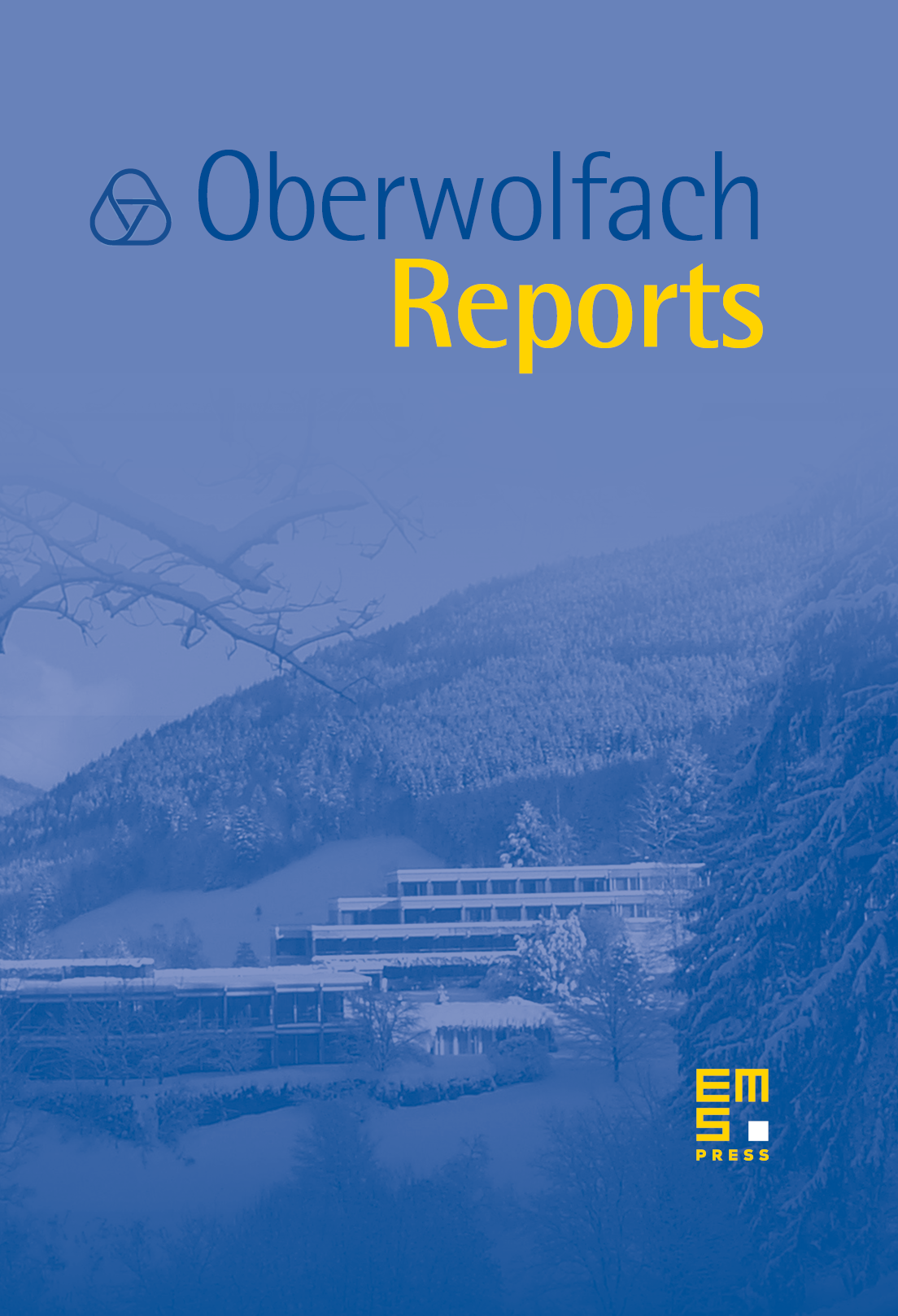Mini-Workshop: Surface Modeling and Syzygies
David Cox
University of Massachusetts, Amherst, United StatesAlicia Dickenstein
Universidad de Buenos Aires, ArgentinaHal Schenck
University of Illinois, Urbana, United StatesJosef Schicho
Austrian Academy of Sciences, Linz, Austria

Abstract
A central problem in geometric modeling is to find the implicit equation for a curve or surface defined by a rational map. For surfaces, the two most common situations are the images of parameterizations or .
The implicitization problem involves interesting commutative algebra. Implicitization is a problem in elimination theory, which allows one to use standard tools such as Gröbner bases or resultants. The surprise is that more sophisticated tools from commutative algebra are also being used, and syzygies play a leading role. We now describe some aspects of this, referring to [C1] for a detailed survey and to [BJ] for a more general algebraic point of view.
In [SC], Sederberg and Chen introduced the method of moving curves and surfaces. For a curve parametrization , a moving line that follows the parametrization is a element of the syzygy module on the generators of the ideal . The syzygy module of is free of rank two, and a Hilbert function computation shows that if are homogeneous of degree without common factors, then there is an -dimensional vector space of moving lines of degree . Write each moving line as
where the are placeholders, representing the fact that . By collecting coefficients, we can write
A main theorem of [CSC] is that the determinant of the matrix of the is a power of the implicit equation for the image.
For a surface parametrization given by , a moving plane that follows the parametrization is an element of the syzygy module on the generators of the ideal , and a moving quadric that follows the parametrization is an element of the syzygy module on the generators of . The moving surface method of [CGZ] requires knowing that a syzygy of the form
comes from the Koszul complex when have no common zeros. In the case of (i.e., when are homogeneous polynomials), this is proved by observing that form a regular sequence, so that every syzygy comes from the Koszul complex. For (i.e., when are bihomogeneous polynomials), the Koszul complex is not exact in all bidegrees, but by vanishing theorems for cohomology, it can be seen that the sequence is exact in the bidegree of interest.
The main result of [CGZ] involves parameterizations without base points. When base points are allowed, [BC] uses results of [CS] to show that for , the moving surface method of [CGZ] applies when the base points are local complete intersections. This is also true for , by [AHW]. The proofs in [BCD] use results about the regularity of and ; in a similar way, the proofs in [AHW] use results about bigraded regularity. In [CCL] a special case of the Serre conjecture is used to conclude that syzygy modules are always free for affine surface parameterizations.
Interestingly, the abstract general setting for this application of syzygies for the implicitization problem is given by the approximation complexes defined by W. Vasconcelos and coauthors [HSV, V]. The application of this method to compute the implicit equation of a parameterized hypersurface has been developed recently in [BJ, BCh, Ch]. It has been implemented in the case of finite nice base points by Busé [B]. The implicit equation is obtained from a double complex which provides a resolution of the blow up algebra of the ideal of base points, in case this ideal is of linear type, i.e. in case the associated Rees algebra and symmetric algebra coincide. The article [BChJ] studies optimal degree estimates and the extraneous factors that appear when the base points are almost local complete intersections, as well as a link with some particular resultant computations.
As noted in [BJ], the set of all moving hypersurfaces that follow a given hypersurface parametrization form an ideal that is the ideal of relations defining the Rees algebra associated with the parametrization. The structure of this ideal is investigated in some special cases in [C2] using local cohomology, local duality and the Sylvester forms introduced by Jouanolou [J]. The paper [C2] uses results from the commutative algebra literature (the paper [MU] of Morey and Ulrich) and from the geometric modeling literature (the paper [SGD] of Sederberg, Goldman and Du). Understanding the general case for curves is an interesting open problem in both commutative algebra and geometric modeling. The surface case is also completely open.
The parametrization is also not an intrinsic property of the parametrized variety, in contrast to the implicit equation. In some cases, it seems worthwile to replace the given parametrization by a simpler one before one attempts to implicitize. In the curve case and in the surface case, we can simplify the parametrization (if possible) without implicitizing, as shown in [Schi3]. The smallest possible parametric degree has been studied in [Schi1].
Another line of research developed in [EK, STY] aims to determine a priori the Newton polytope of the resulting equation, to translate then the implicitization problem to an interpolation linear algebra problem. These articles are based in the theory of sparse resultants and the use of tropical geometry. Numerical issues in the implementation of the theoretical results are also relevant [Schi2].
Cite this article
David Cox, Alicia Dickenstein, Hal Schenck, Josef Schicho, Mini-Workshop: Surface Modeling and Syzygies. Oberwolfach Rep. 4 (2007), no. 4, pp. 3181–3208
DOI 10.4171/OWR/2007/54